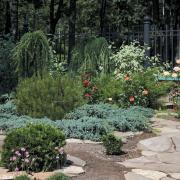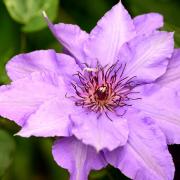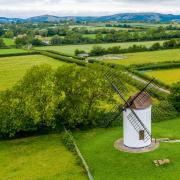‘To plant a garden is to believe in tomorrow’ – Audrey Hepburn said this, and nothing could be truer, especially when planting in the autumn.
In many ways, autumn is the busiest season of all for gardening enthusiasts. Fruits need to be harvested and pruned, perennials require cutting back and, when flowering is over, leaves need to be collected and compost made. But most importantly, autumn is the time for planting and preparing your garden for the winter months and next year’s blooms.
It’s also a time to plant spring flowering bulbs. Planting bulbs in September and October while the soil is still warm gives them time to establish roots before they go dormant for the winter. The bulbs can be planted anytime from late September through to December; however, we advise planting tulips in late October or November. Snowdrops, crocuses, narcissus, tulips and hyacinths are the harbingers of spring in your garden, balcony or patio and bring such joy after the long winter months!
Our top tips for planting bulbs
• Plant bulbs in larger quantities than you think you’ll want; that way you will not be disappointed.
• If you do nothing else, buy bulbs when they come out in stores and garden centres, the fresher the better!
• With bulbs, size does matter! Look for large, firm, healthy looking bulbs.
• Bulbs are invaluable for injecting early season colour in your garden.
When choosing bulbs, try and buy bulbs as soon as they arrive in store, this will ensure you get the best selection. Choose your spring bulbs to suit your garden theme and colour combinations and choose your varieties based on their flowering times, that way your bulbs can flower in succession from late winter through to the summer.
When planting, take note of the different flowering heights of your bulbs to ensure they are in the right position in your pots or borders, generally with taller flowers being towards the back of the border. If you are planning on planting bulbs in a big pot, or in a decent width bed or border, you may want to select bulbs of different eventual flowering heights. It is best visually to plant taller varieties in the middle of the pot, or towards the back of the border and shorter ones towards the edge of the pot or front of the border.
You can plant spring bulbs directly into the ground, in borders or in containers. Preparation is key, turn the soil over, incorporating your bulb compost it’s also good to add some fertiliser when planting, which will feed the plant during its initial growth phase. Ensure the ground or pot has good drainage, if planting in the ground, you may want to add a bit of horticultural grit to allow for better drainage.
As a rule of thumb for the planting depth, is to plant a bulb twice as deep as the bulb is tall. For large bulbs such as narcissus, tulips and hyacinths, this will be about ten to twenty centimetres deep. For smaller bulbs such as snowdrops and crocuses, this is about five to ten centimetres. Spring bulbs generally need sun or partial shade and free-draining soil, so if your soil is very heavy, incorporate some horticultural grit when planting.
Your distance between bulbs generally depends on their size, with larger bulbs needing more space than the smaller ones, large bulbs need about twelve centimetres apart from each other, small bulbs about five to seven centimetres apart. This also depends on the visual effect you want to achieve, for a natural-looking effect, plant the bulbs at varying distances apart. If you want a solid-colour floral carpet effect, plant all the bulbs at the same distance apart.
Water bulbs immediately after planting, encouraging root production. The sooner roots have developed, the sooner the bulbs become frost tolerant.
Many bulbs can be left in the soil after flowering. Just leave them alone and let the leaves wither back on their own. Next year, these same bulbs can produce another beautiful display, but you will have to help them along feed and fertiliser. Apply fertiliser when the shoots emerge from the soil and repeat the procedure immediately after flowering.
Jobs in the Garden for October
• Harvest pumpkins and squashes before the first frosts. They quickly turn mushy if left outside!
• Plant scented wallflowers – bundles of field grown plants are in garden centres now. These will flower in spring.
• This month is the ideal time to plant hedges, soft fruit, and move trees and shrubs.
• Lift and divide herbaceous perennials, removing perennial weeds, and improve the soil with compost and fertiliser.
• Lift dahlia tubers after the first frost and store frost free in barely damp compost.
• Strawberry runners should be planted now. If they are replacing old plants, choose a fresh site for best results.
• Raise pots off the ground for the winter with bricks or 'pot feet', to prevent waterlogging.
• Create compost bins for collecting fallen leaves and dead plant material.
• Clean your greenhouse, getting into all the corners. Leave the door open to dry it properly.
• Move any frost tender plants such as citrus inside now.
• Invest in bird baths and bird feeders this autumn. Birds are a gardener's friend and keep pests down.



























